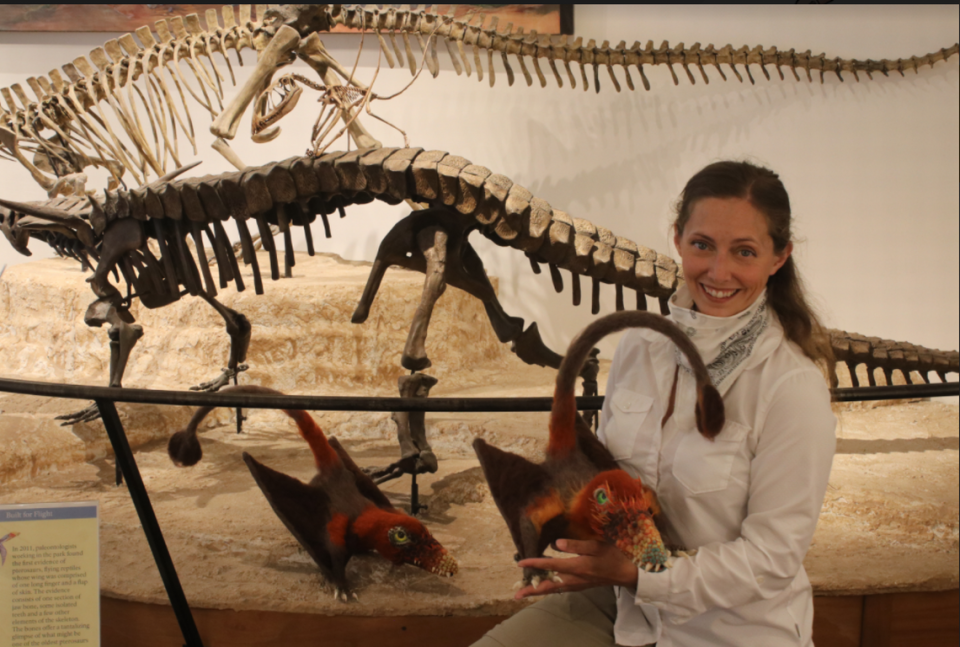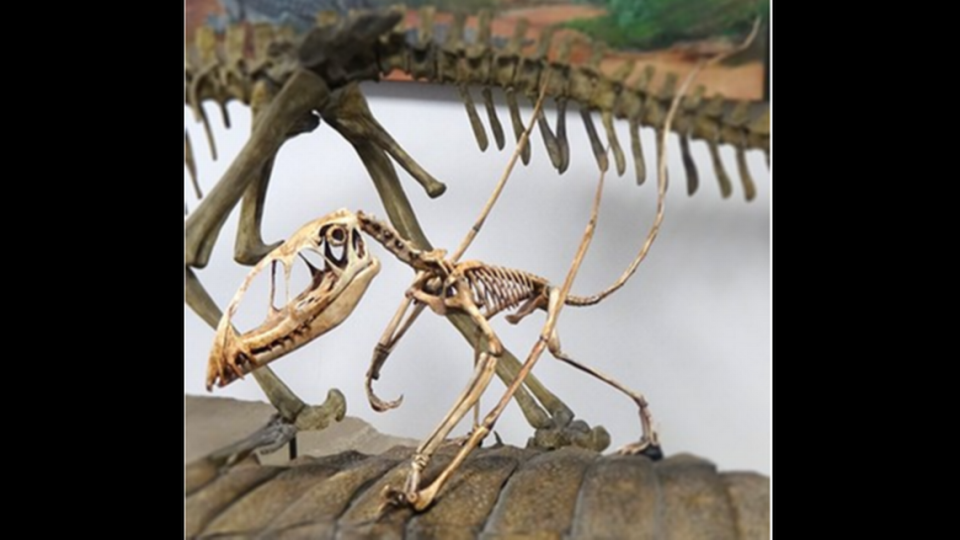‘Wonderfully bizarre’ flying reptile resembling dragon recreated from Arizona fossils
A species of bird-like reptiles known as pterosaurs have been recreated using 150-million-year-old fossil evidence found in Arizona, and the end result looks alarmingly like a mystical dragon.
Imagine a vibrantly colored parrot adorned with leather wings — and bearing the face of a mutant crocodile and tail of a monkey.
Pterosaurs evolved into multiple sizes — some as big as an aircraft — but the one recreated by sculptor Catherine Danae Elser is among the smaller at about two feet long and a foot high.
National Geographic once referred to pterosaurs as “the weirdest wonder on wings” and Elser’s sculptures seem to prove it.
“These amazing creatures are wonderfully bizarre,” Elser told McClatchy News.
“We have been spoon fed the same sort of reptilian image of these guys for way too long. I think they must’ve been quite the site to see soaring in the sky ... with the evidence of fiber being present on their bodies and not the typical greens, browns, grays and blacks we so often see ancient creatures depicted with.”
The toothy pterosaur was a reptile — not a bird — and “closely related to dinosaurs,” but it evolved under a different “evolutionary lineage,” according to the National Park Service. It’s believed they “ruled the sky,” and snapped up their meals while flying overhead.
Elser says some viewers have compared her recreations to legendary dragons, which isn’t too off the mark.
“They really are like fictional beings, except the most exciting part is that they were real!” Elser says. “These weird wonders on wings might not have looked exactly like my interpretation, but I think they are a lot more fantastical than we have even previously imagined.”

The foundation for her models is fossil evidence found at Petrified Forest National Park in northern Arizona. The park sits atop deposits from the Triassic Period, going back over 200 million years, the NPS says.
“The Triassic Period is sometimes referred to as the ‘Dawn of the Dinosaurs’ because it is the time before the Jurassic Period when dinosaurs ruled the earth,” according to the NPS.
Elser create the sculptures — one male and one female — as part of an artist-in-residence program that challenged her to “bring life to one of the fossils found there.” She worked with park paleontologists to fill in the historical blanks.
This is not the first time someone has recreated a pterosaur, but Elser’s work is considered among the best informed, because it uses the most recent data gleaned from fossils.
“I would love to think my interpretation is the most accurate to date, but I know that my medium alone, wool, made some aspects of the pterosaurs a little bulkier than it might have been,” she says.

“The fossils on record after all are very dainty, and we know the membrane of the wings was very thin. On the other side of the coin, pterosaurs had been previously represented as these creatures with lizard like skin ... But, after researching and reading articles sent to me, I deduced that wool may actually be one of the best ways to render these pterosaurs, because there is evidence that they indeed had fiber on them!” Elser said.
The same research also influenced the colors she used, including evidence pterosaurs had something akin to “pheomelanin-rich red human hair.” The biggest challenge, Elser says, was the shape of the face, which resembles more a crocodile’s snout than a modern day bird beak.
The American Museum of Natural History reports pterosaurs were “the first animals after insects” to take to the skies.
“They evolved into dozens of species. Some were as large as an F-16 fighter jet, and others as small as a paper airplane,” the museum reports. “The leading theory today is that pterosaurs, dinosaurs, and crocodiles are closely related.”

